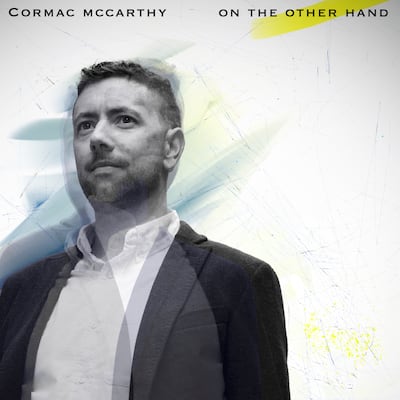Though it may sound like some pianist’s in-joke, the title of Cormac McCarthy’s solo piano album is laden with meaning. Since his early 20s, the Cork pianist has suffered pain in his right hand, a not inconsiderable burden for someone in his line of work.
But McCarthy has learned to live with it, and when he does play – whether it’s with fiddler Martin Hayes’ Common Ground Ensemble or accompanying vocalists such as sean-nós singer Nell Ní Chróinín and jazz diva Dana Masters – he makes every note count.
Born in Ovens, Co Cork, the son of noted flautist Johnny McCarthy, he grew up surrounded by Irish traditional music and though his journey has taken him from composition studies at the Cork School of Music to a masters in jazz studies in Chicago, the Irish tradition has always been part of his identity as a musician.
His debut album, Cottage Evolution (2015), announced a new voice in Irish jazz, blending traditional influences with the wide open sounds of the American midwest, linking him to the bright, melodic approach of US pianists such as Lyle Mays and Aaron Parks.
READ MORE
But if his debut was an ensemble work, On The Other Hand is a much more personal statement and marks the 38-year-old out as one of the rising stars of European jazz piano.

Solo piano is the most intimate and revealing of settings, and throughout the album’s eight tracks – produced by cellist Kate Ellis, McCarthy’s band mate in the Common Ground group – there is a sustained aesthetic that seamlessly blends classical, jazz and traditional influences.
So what does McCarthy hear when he listens back to the recording?
“I generally make a conscious effort not to analyse my own stylistic approach”, says McCarthy. “I’m almost afraid if I do that I’ll box myself into a corner. However, I do think that when it comes to solo piano I am massively influenced by classical music. Combining textures from that canon with various approaches unique to jazz is probably something I have focused on for a while.
“I think the influence of trad will always be there given my upbringing. That influence is explicit on certain tracks, but is perhaps more subtle and even a little deeper where you might not expect.”
Some tunes – the gorgeous opener Caoimhe’s Tune, for example – are tightly written compositions, while others, such as Hidden Causeway and Clay Feet, are more loosely improvised.
Throughout, there is a sense of a musician who is taking risks and finding his own voice. On an instrument that has already been so extensively plundered for its solo potential, that is no mean feat.










